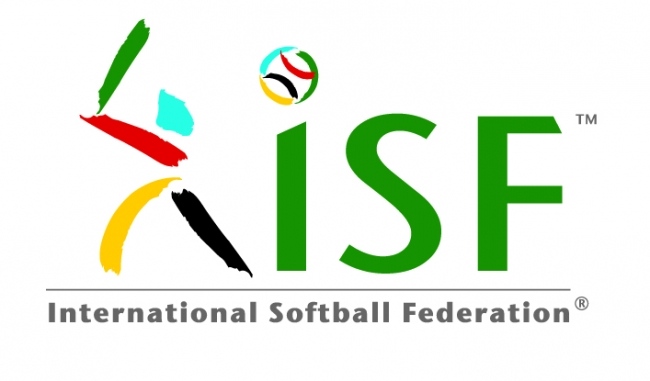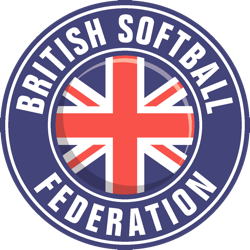John Austin, former President of Softball Ireland and now their Coaching Director, has recently taken on the role of ESF Slowpitch Development Officer, succeeding Bob Fromer. John chaired the Slowpitch Task Force at the recent ISF Congress in Oklahoma City and here is his account of what happened and what it all means.
 Slowpitch softball was put firmly on the agenda at the recent ISF Congress held from 28-30 October in Oklahoma City, USA. From my arrival in the “Home of Softball” until my departure, slowpitch was an item of conversation among a number of the 109 delegates from 70 member federations worldwide.
Slowpitch softball was put firmly on the agenda at the recent ISF Congress held from 28-30 October in Oklahoma City, USA. From my arrival in the “Home of Softball” until my departure, slowpitch was an item of conversation among a number of the 109 delegates from 70 member federations worldwide.
The reason was that for the very first time, a Slowpitch Task Force meeting was placed in print on the agenda alongside all the other Commission meetings that would take place over two days in the run-up to the Congress plenary session on the Sunday, and every delegate received a copy of this agenda when they registered.
High profile
Ok -- maybe this isn’t the first time that slowpitch softball has been given a voice at world level, but it's the first time that slowpitch has been given such a high profile platform as a scheduled part of Congress proceedings.
Starting with the Competitions Commission on the Friday afternoon (28 October), which makes recommendations and decisions regarding tournament host cities and competition formats, the Commission Chair, ESF President Andre Van Overbeek, placed slowpitch softball on the main agenda. He invited R.B. Thomas (who runs senior tournaments in the US) and me to make introductions about slowpitch to the attendees and extend an invitation to them to participate in the Slowpitch Task Force meeting the next day.
On Saturday morning (29 October) the Slowpitch Task Force meeting took place. Heading into the meeting, Craig Cress from the ASA, ISF Tournaments Officer Laurie Gouthro and I weren't sure what to expect regarding interest or participation levels. But there was obviously a fair bit of interest out there as we ended up with 25 attendees representing 15 separate federations and groups from around the world.
In attendance
The attendees were:
ISF
ASA
ESF
Special Olympics
Aruba
Australia
Bulgaria
Great Britain
Canada
France
Ireland
Kenya
Norway
Philippines
Slovenia
Session details
The session lasted about two hours, with all attendees participating in the discussions, describing levels of participation in their respective countries/regions as well as putting forward their thoughts on the main obstacles to slowpitch growth and development.
As far as slowpitch participation rates go among the participants, they ranged from no official participation to very high participation with an interesting split in the format played depending on geographical region. Europe plays co-ed slowpitch, while North and South America play predominantly single-sex men!
I say “official participation” above as I felt there was an acknowledgement that there is far more slowpitch played in member countries than anyone realises. But since these slowpitch players often do not affiliate to their federations, little is known about the extent of participation or the individuals that organise them.
A questionnaire (kindly put together by the BSF) was filled in by all attendees and formed the basis of our attempts to understand what level and what type of slowpitch softball is played in member federations. We also obtained contact details for the best individuals to contact regarding slowpitch in each country.
Obstacles
As an initial fact-finding mission the meeting was a success, with some surprising observations on the obstacles to slowpitch growth and development. Most notable was the issue of perception – that slowpitch is somehow not seen as a competitive sport and therefore is not able to attract many players from a fastpitch or baseball background.
Like all these types of meetings, however, we learn from our shared experiences, such as the input from two Team USA players (former professional baseballers) who stated that it was only after being persuaded to try slowpitch that they began to appreciate and fall in love with it. Until then, they had viewed slowpitch as a non-competitive sport that they didn’t want to play. Another example of overcoming perception was legendary USA fastpitch pitcher Lisa Fernandez who now plays and loves co-ed slowpitch.
Other obstacles discussed were the more traditional ones: lack of human resources and equipment, over-regulation (fastpitch regulations applied to slowpitch) and a lack of unified playing rules (e.g. pitching arcs of 6'-12' and 7'-10').
One observation that came to light following my presentation of the ESF Slowpitch Development Pack that my predecessor Bob Fromer had put together (as part of an update of what the ESF are doing to promote slowpitch) was that there is a general lack of promotional material available for slowpitch. According to the Australian delegate, he has been attending a number of Congresses and this was the first time he had seen any slowpitch promotional material, and he loved it. The same can be said of the New Zealand delegate who, while unable to attend the Task Force meeting, made sure he got a copy of the Development Pack as well.
Outcomes
There were two concrete outcomes from the meeting. First was the inclusion of the ISF Co-ed Slowpitch World Cup onto the official ISF Calendar of events for 2014 as there was agreement that having an international competition to work towards would be very beneficial to slowpitch development. The second was a call for each Regional Confederation (there are six within the ISF) to establish a Slowpitch Development Officer (just like my role within the ESF) to facilitate communication and co-ordinate development efforts.
Other outcomes of the Task Force meeting, which will be longer term in nature, will be to look at ways to break down the negative perception of the slowpitch format as a non-competitive sport and to educate federations on the key benefits of the slowpitch game for their members.
Plenary session
The Congress plenary session took place on Sunday morning, October 30. As per the agenda, all Commission Chairs gave a report of their respective meetings to Congress, and that included the Slowpitch Task Force. Slowpitch was put front and centre on the main stage as I was able to deliver the Task Force report.
And if you thought that was just a formality, you’d be wrong. An Argentinian delegate, who wasn’t able to attend the Task Force meeting, sought me out following my presentation as they have slowpitch in Argentina -- about 35 teams -- and they want to grow it further.
In summary
In short, this ISF Congress gave slowpitch softball a three-day platform to promote itself. Thanks to the collective efforts of the ISF, ESF and the ASA, I think a good job was done. There is no doubt in my mind that there is now a serious interest in the slowpitch format of the game at an international level.
This means that there is a recognition that slowpitch already exists in many member federations (albeit under the radar in most) and that there are obvious hurdles to overcome in developing the sport, especially as some federations don’t know how or where to begin their development efforts.
But overall, this Congress was a great initial step in putting slowpitch softball on the map. Our collective job now is to move forward and keep it there.
